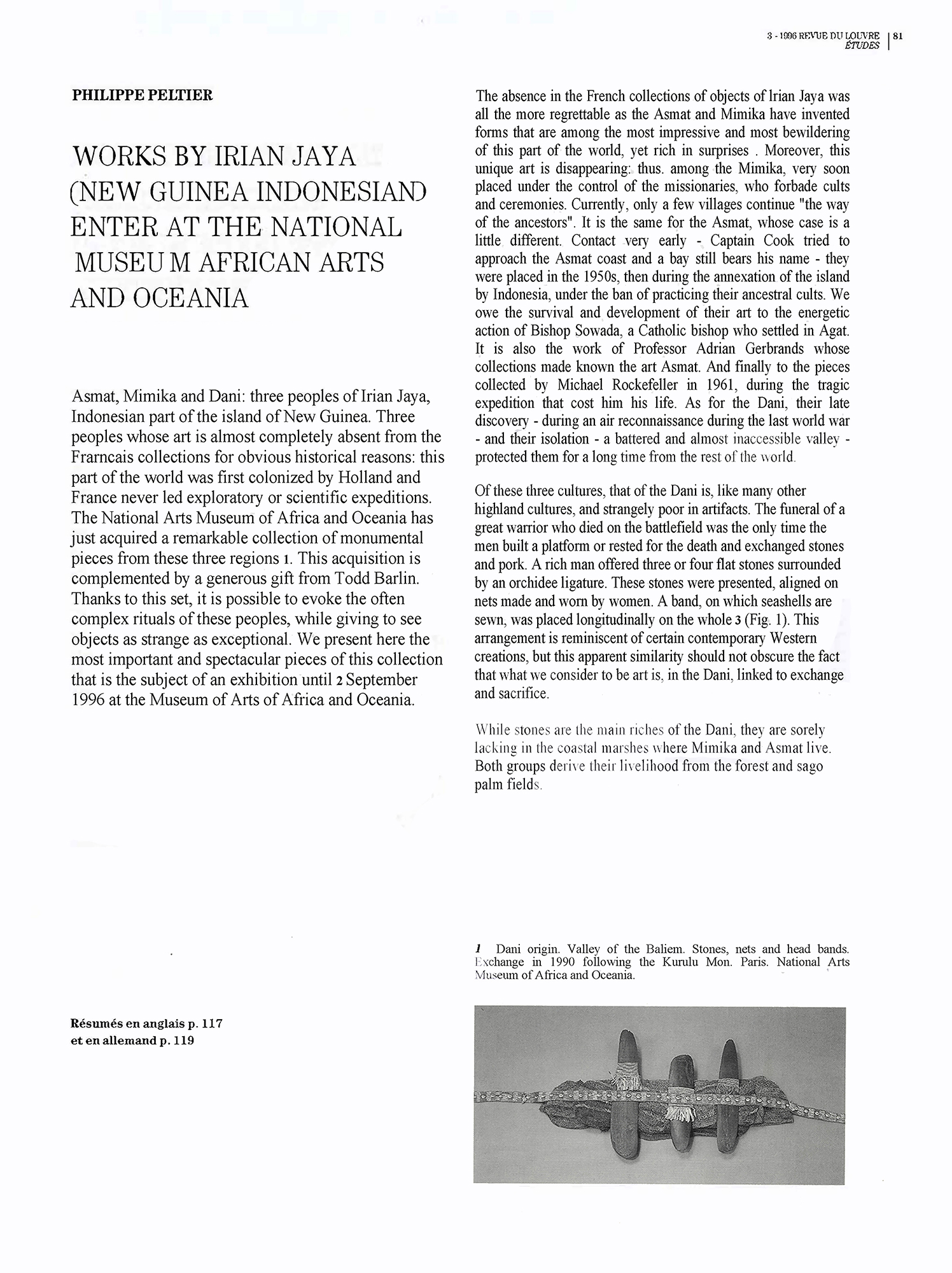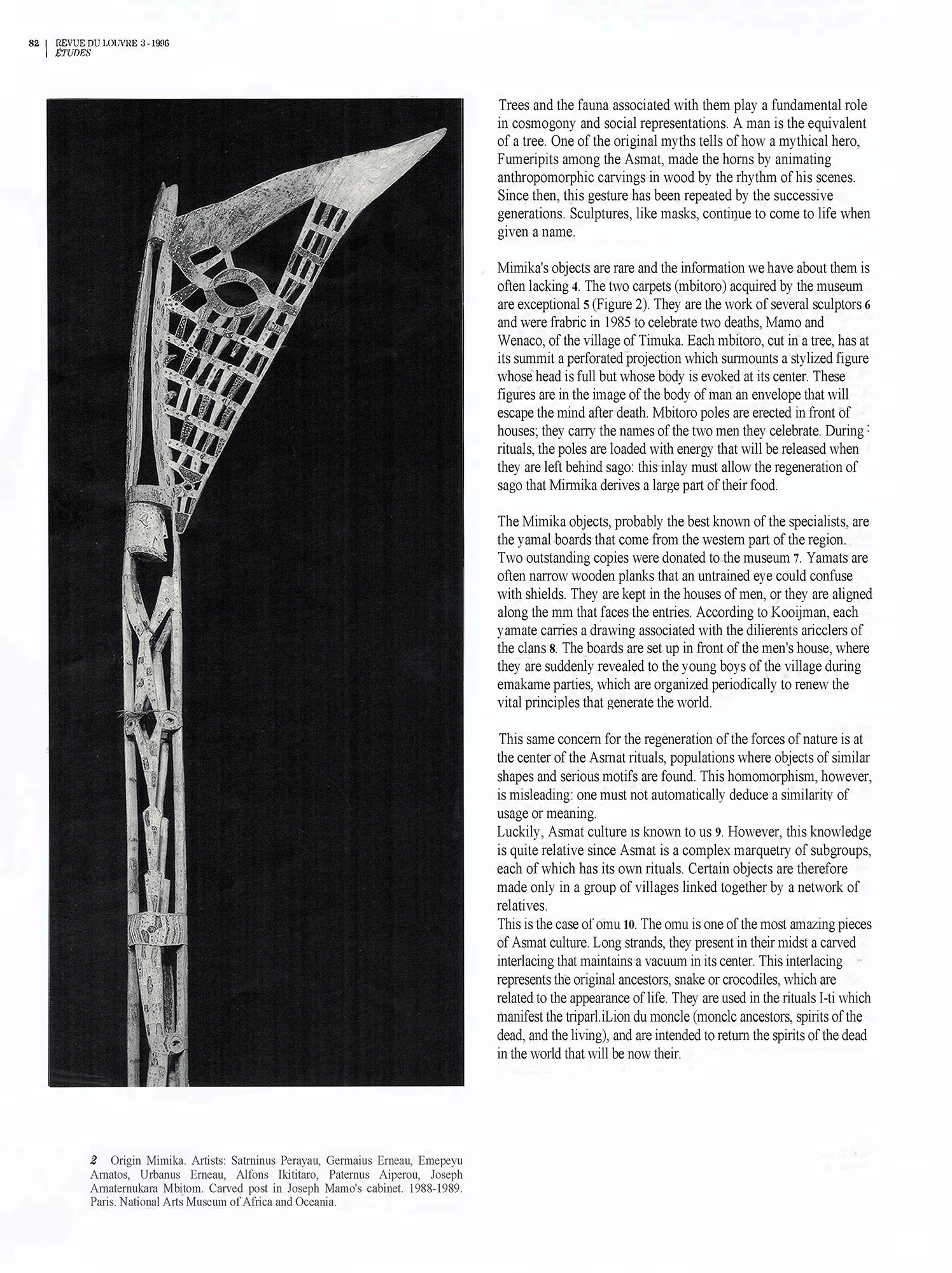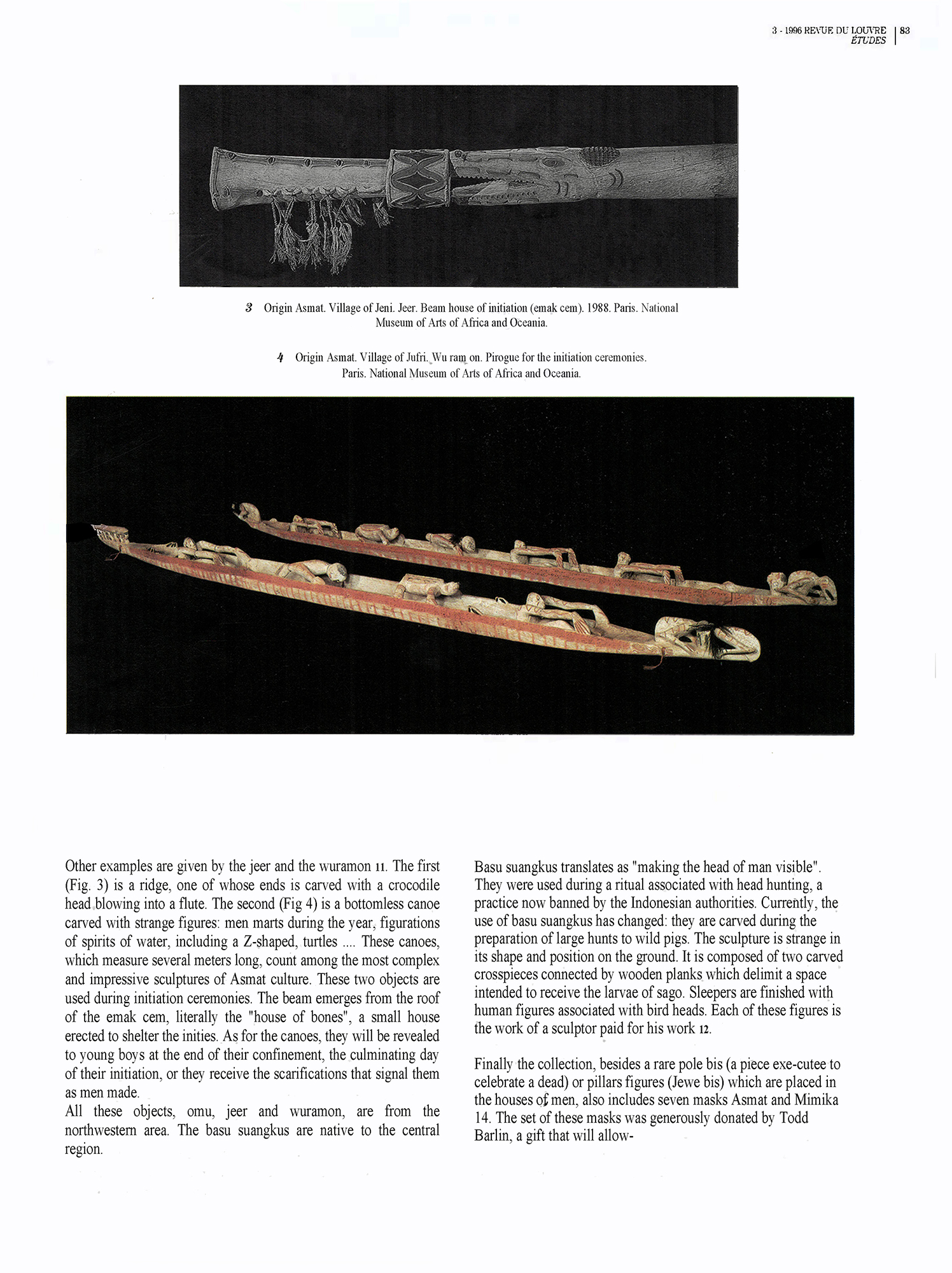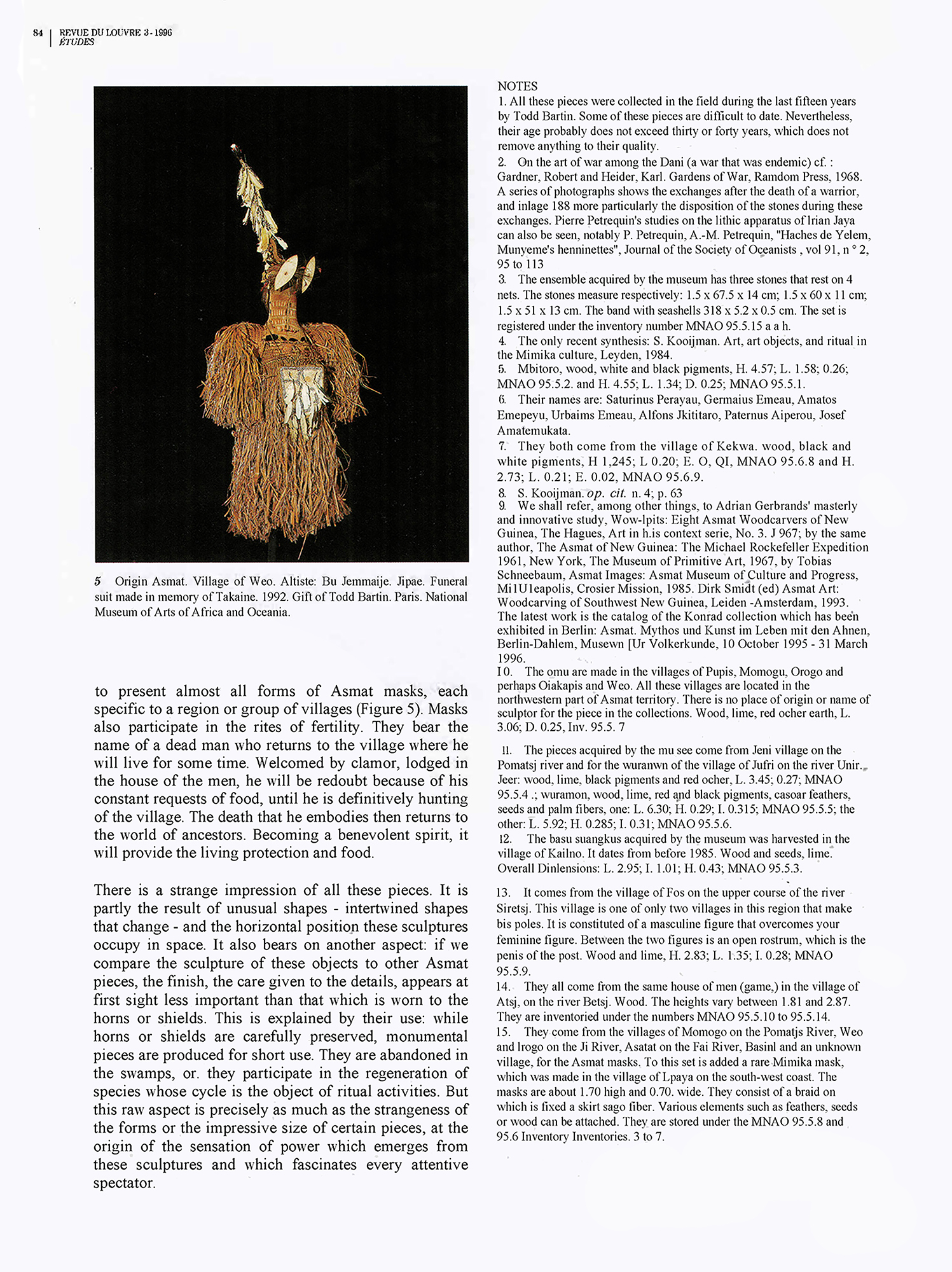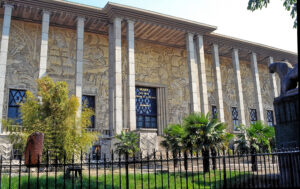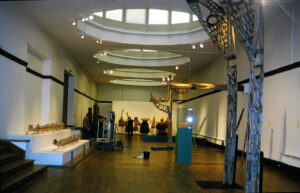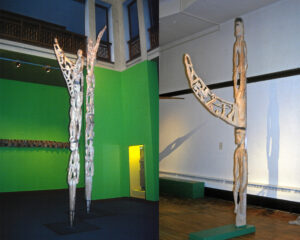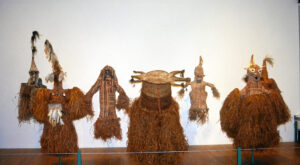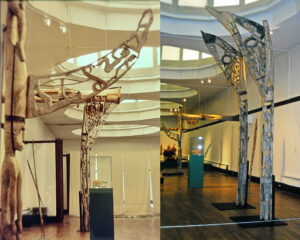A Superb Old New Guinea Waskuk Nogwi Figure from the Kwoma People on the Upper Sepik River Area in the East Sepik Province of Papua New Guinea
Nogkwi is one of three distinct ceremonies held annually in the villages of the Kwoma, Nukuma, and Mayo speakers of the Upper Sepik River, in a region generally referred to as the Waskuk. These ceremonies are associated with the harvesting of yams. There are two other Yam Harvest Ceremonies that are associated with a distinctive form of sculpture, Yina & Minja,
Nogwi was the last and most secret Yam Harvest Ceremony, confined to the most powerful, senior men in society who were both homicides and the fathers of many children.
Douglas Newton in his book: Crocodile and Cassowary – Religious Art of the Upper Sepik River, New Guinea”. The Museum of Primitive Art, New York, 1971, p. 88)
Newton recorded: “The Honggwa m ma had several supplementary musical performances for the Nogwi, these were duets played on two sacred flutes the rhythms on this occasion representing the calls of Cassowary birds and the blowing of a Conch Shell Trumpet & a wood carved side-blown trumpet, these sounds were the signal to start the work of building of a high fence around the ceremonial house by the young men and after they were sent away.
The Nogwidji or senior men dug a trench along one side of the ceremonial house and the young men then filled the trench with water. A large platform was built over the trench with an aperture above it for a Water Drum. Around the edge of the platform were fixed horizontally with skulls of important ancestors with decorations of shell ornaments trailing to the ground.
The Nogwi carvings were then brought into the house; they were two almost life-size figures of mythical women named Hameiyau and Sanggriayau. The Nogwidji went about the village, from which the women had run away in fear of the figures, smashing the pots belonging to the people of their respective clans–the destruction was later attributed to the female spirits.” At night the men played the Water Drum. At dawn, the men went into the bush and played the four special instruments. The men then shouted, “Hameiyau and Sanggriayau are escaping catch them catch them “.
The old Nogwi & other Ceremonial Figures are hidden in garden huts, away from the village when not in use, as they have acquired power over time and through use. New carvings are required from time to time; power is not inherent, but develops in the process of carving and painting as their power lies in the bright polychrome ochre paint applied to their surfaces, for the Kwoma the paint is a magical substance that endows the figures with supernatural power and beauty.
The ceremony takes place inside the men’s Ceremonial house (korob) A platform is built, and while one major Nogwi figure is displayed as a focus, many lesser Nogkwi & other associated figures and pottery heads may be used. The Nogkwi are tied to poles on the ceremonial platform and further decorated with shell wealth items, a ‘beard’ made of feather down, pig’s tusks, and sometimes a headdress. Slit gong drums are played and songs of myth relating to the yam harvest are sung. At the finish of the ceremony, the Nogkwi is stripped of its decorations, wrapped tightly in sheaths from the black palm, and returned to the garden hut.
Kwoma has a traditionally oriented ritual and aesthetic life. They believe in a complex pantheon of spirits. These fall into two categories: “bush” or “water” spirits occupying streams, boulders, or other natural features, collectively termed (in pidgin) masalai; and clan spirits depicted by ceremonial carvings.
Like other Sepik peoples they are famous for their art, principally wood carvings and paintings on bark. The bulk of plastic art decorates ceremonial buildings. The ceilings of these structures are lined with hundreds of paintings of totemic species, and the posts and beams are lavishly carved with sculptures depicting mythological personages and spirits. Kwoma men’s houses are among the greatest of all artwork in the Pacific region “.
This very beautiful old Kwoma sculpture has been one of my favourite Oceanic Artworks that I have ever owned, it has a soft gentle surreal feel where often Middle Sepik artworks can seem aggressive, Waskuk/ Kwoma Art in my opinion is one of the great art styles of Papua New Guinea.
Provenance: Collected by William Barclay in New Guinea 1967 & The Todd Barlin Collection of New Guinea Oceanic Art
Exhibited Oceanic Arts Pacifica: Oceanic Art from the Todd Barlin Collection at Casula Powerhouse Arts Centre 2014
See my new EXHIBITIONS GALLERY showing the Museums and Art Galleries Exhibitions that I provided artworks for over the past 40 years. There is the link to the article about my artworks published in the prestigious Louvre Magazine in 1996
I have artwork for Museums and art Galleries but also for collectors at every stage of their collecting. I want to encourage people to explore the fine art of New Guinea & West Papua and the Pacific Islands and to be able to see and touch the artworks in a relaxed and friendly manner in my Sydney Gallery. I would like to invite you to visit my gallery and see the artworks in person and also look at my website www.oceanicartsaustralia.com where there are many Galleries & Sub Galleries to explore.
My Gallery of nearly 40 years is the last physical gallery in Sydney that specializes in New Guinea and Oceanic Art. Sydney is very close to New Guinea & the Pacific Islands where all of these amazing artworks came from, Australia’s closest neighbors.
To see many more rare items and the finest masterpieces, please make an appointment with us to visit the gallery.
For all inquiries, please contact us

